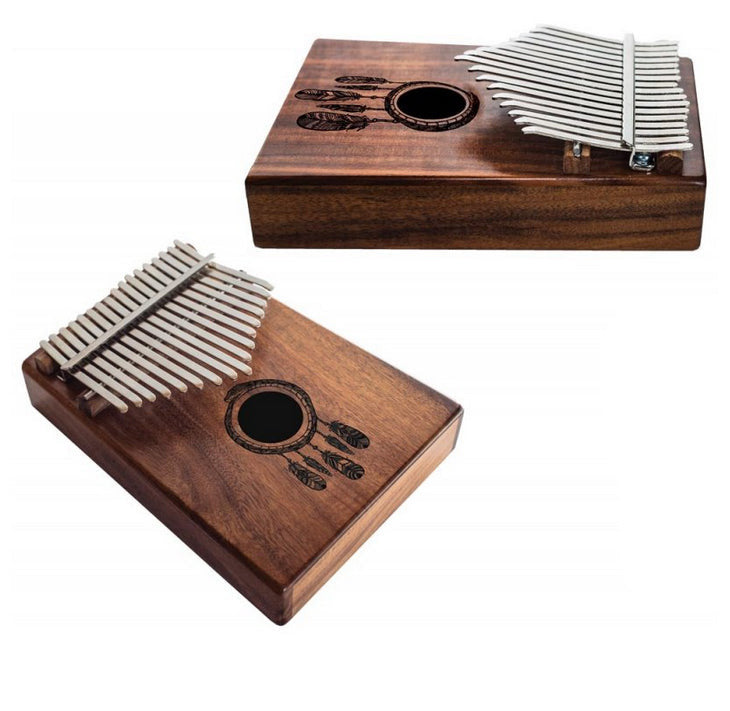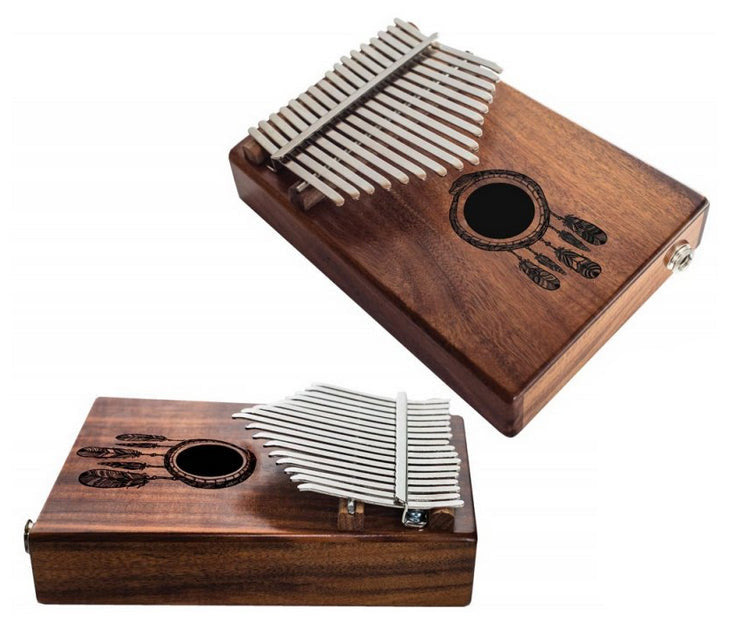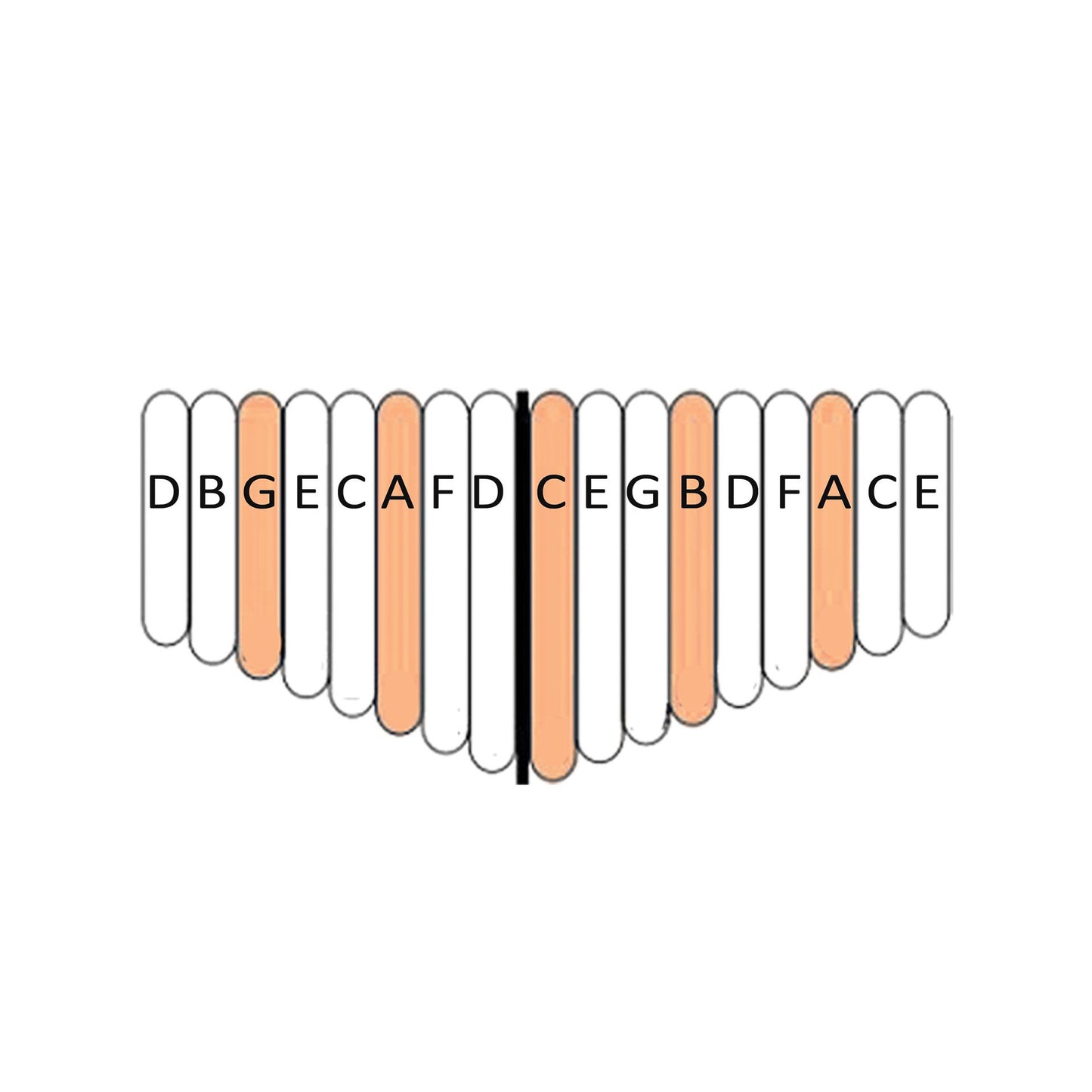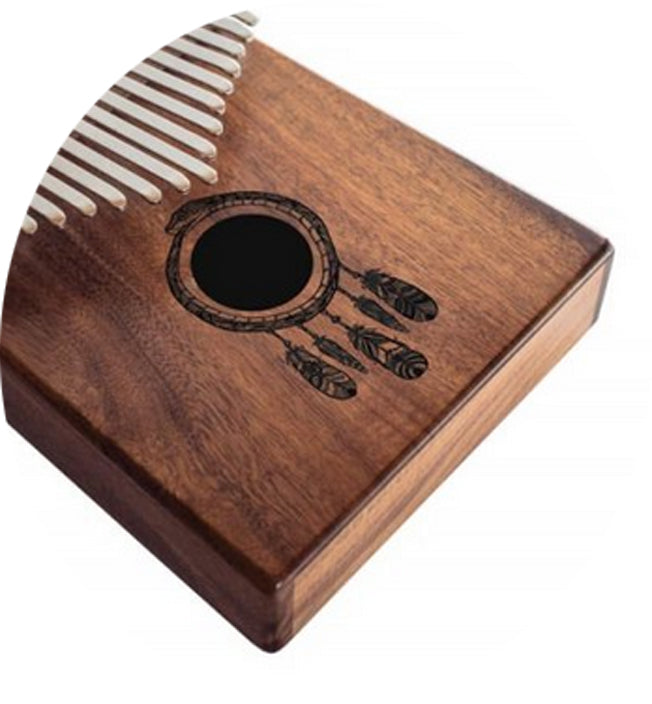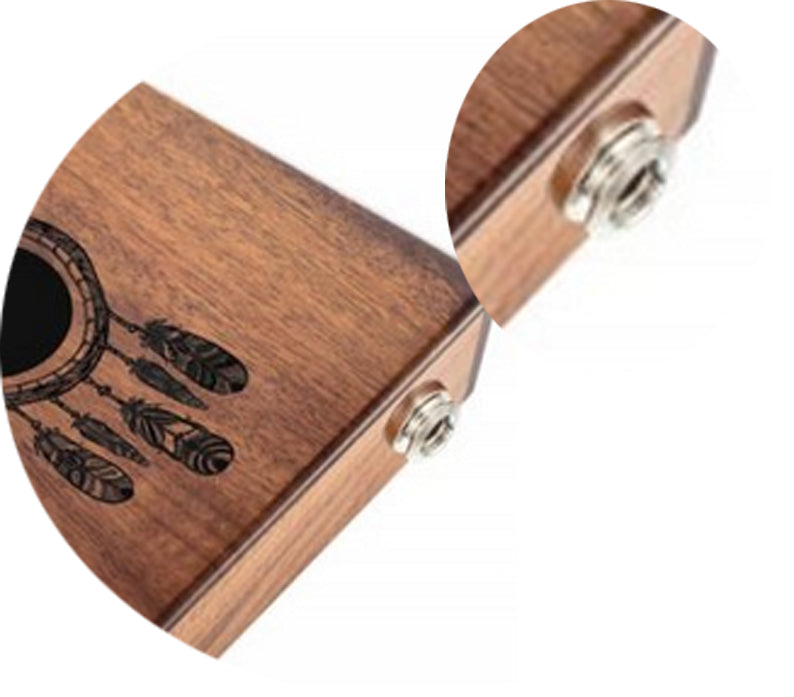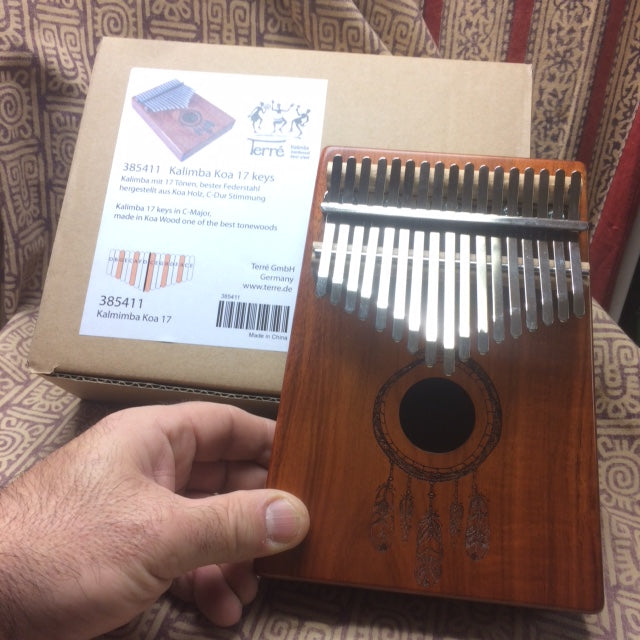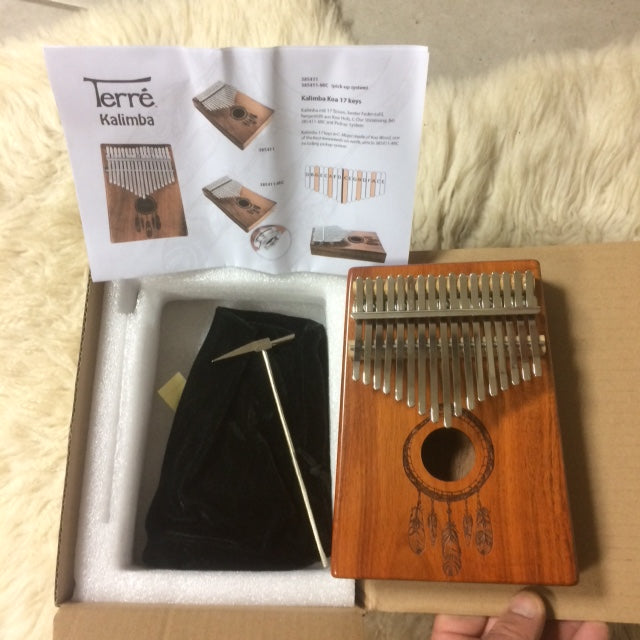Kalimba 'Koa'/ Finger Piano - 17 notes, made of koa wood (tropical resonance wood) tuned in C/C major. Decorated with a carved Indian motif and comes with a cloth bag and a tuning hammer! 23x19x7.5 cm!
Kalimba 'Koa'/ Finger Piano - 17 notes, made of koa wood (tropical resonance wood) tuned in C/C major. Decorated with a carved Indian motif and comes with a cloth bag and a tuning hammer! 23x19x7.5 cm!
Couldn't load pickup availability
- ✧─────✧
About the product:
→ Kalimba/ Finger Piano Tuned in C/ C major: D, B, G, E, C, A, F, D, C, E, G, B, D, F, A, C, E - Option: 'electro pick-up model', with pickup system in the bridge !
🌍 Origin: India
📐 Dimensions: 23 x 19 x 7.5 centimeters
⚖️ Weight: approximately 570 grams
🧬 Material: Koa wood (tropical resonant wood)
🎶 Sound type: Soft and clear, high to mid-range
📦Packaging: Includes a cloth bag and a tuning hammer, the Kalimba (instructions are included) can be easily retuned by yourself.
🎁 Ideal for giving as a gift or treating yourself!
👉 The appearance and finish are of high quality in terms of beautiful carvings with Indian motifs and overall finish. Tuned in C major and has 17 reeds.
The Kalimba is a wonderful instrument, with a sweet and very harmonious sound, which can easily be played anywhere because it does not require electricity and is very handy.
The playing style is generally done with the thumbs, hence the colloquial term thumb piano. The sound is then generated by the actuation of the steel tongues and their vibratory impulse, which is approximately multiplied tenfold by the wooden resonating body.
Thanks to the different lengths of the steel tongues, different intensity impulses can be given and different tones are created.
For example, a short steel reed produces a higher-pitched, louder sound, while longer ones produce a softer, quieter sound. The harmonious arrangement of these reeds ensures the instrument's atmosphere.
Overall, a kalimba is a perfect instrument for beginners that promises immediate playing pleasure.
📋 Fact sheet:
| Category | Information |
|---|---|
| Origin | The kalimba originates from sub-Saharan Africa. It is derived from the mbira (Zimbabwe) and the likembe (Congo). Modernized in the 1950s by Hugh Tracey in South Africa. |
| Names) | Kalimba, Mbira, Thumb piano (thumb piano). |
| Number of blades | 17 blades (metal keys), generally tuned in C major . |
| Matter | Body in resonant wood (mahogany, koa, maple, etc.), steel blades. |
| Standard tuning | D, B, G, E, C, A, F, D, C, E, G, B, D, F, A, C, E (Can be easily retuned with a special hammer). |
| Sound | Soft, crystalline, meditative. Resembles a small harp or music box. |
| Game mode | The blades are pinched with the thumbs (sometimes also the index fingers). |
| Difficulty | Accessible to beginners, easy to learn even without musical knowledge. |
| Possible styles | Simple melodies, lullabies, meditative music, vocal accompaniment, improvisation. |
| Portability | Very light (570 g), easy to carry everywhere. |
| Special features 14 notes | - More range than a 10 or 12 note kalimba. - Simpler than a 17-note (more compact, easy to start with). |
| Boundaries | - Fewer harmonic possibilities than the 17 notes - Less suitable for complex pieces |
| Uses | - Relaxation - Music therapy - Vocal accompaniment - Musical learning for children and adults |
| Interview | - Store in a cover to avoid humidity - Clean the blades to prevent rust - Retune if necessary |
| Popular manufacturers | Gecko, Donner, Hluru, Moozica, LingTing, EastRock. |
- ✧─────✧
A question? A comment? | Order and delivery information
A question? A comment? | Order and delivery information
⋯⋯⋯⋯⋯⋯⋯⋯⋯⋯⋯⋯⋯⋯⋯⋯⋯⋯⋯⋯
📞 Customer service available from Tuesday to Saturday , from 10am to 7pm (French time)
- 🇫🇷 From France: 06 51 85 38 18
- 🌍 From abroad: +33 6 51 85 38 18
- 💬 Live chat: via the bubble in the bottom right corner of your screen
- 📧 Email : available 24/7 – we respond quickly!
⋯⋯⋯⋯⋯⋯⋯⋯⋯⋯⋯⋯⋯⋯⋯⋯⋯⋯⋯⋯
🔖 Order today and receive your package within 2 to 10 days depending on your continent.
💳 Secure payment & certified by SSL encryption 🔐
↩️ Returns & exchanges possible within 14 to 30 days after receipt.
🌍 Shipping costs are calculated automatically based on your shipping address at checkout.
📦 Country of shipment: France 🇫🇷
Share
